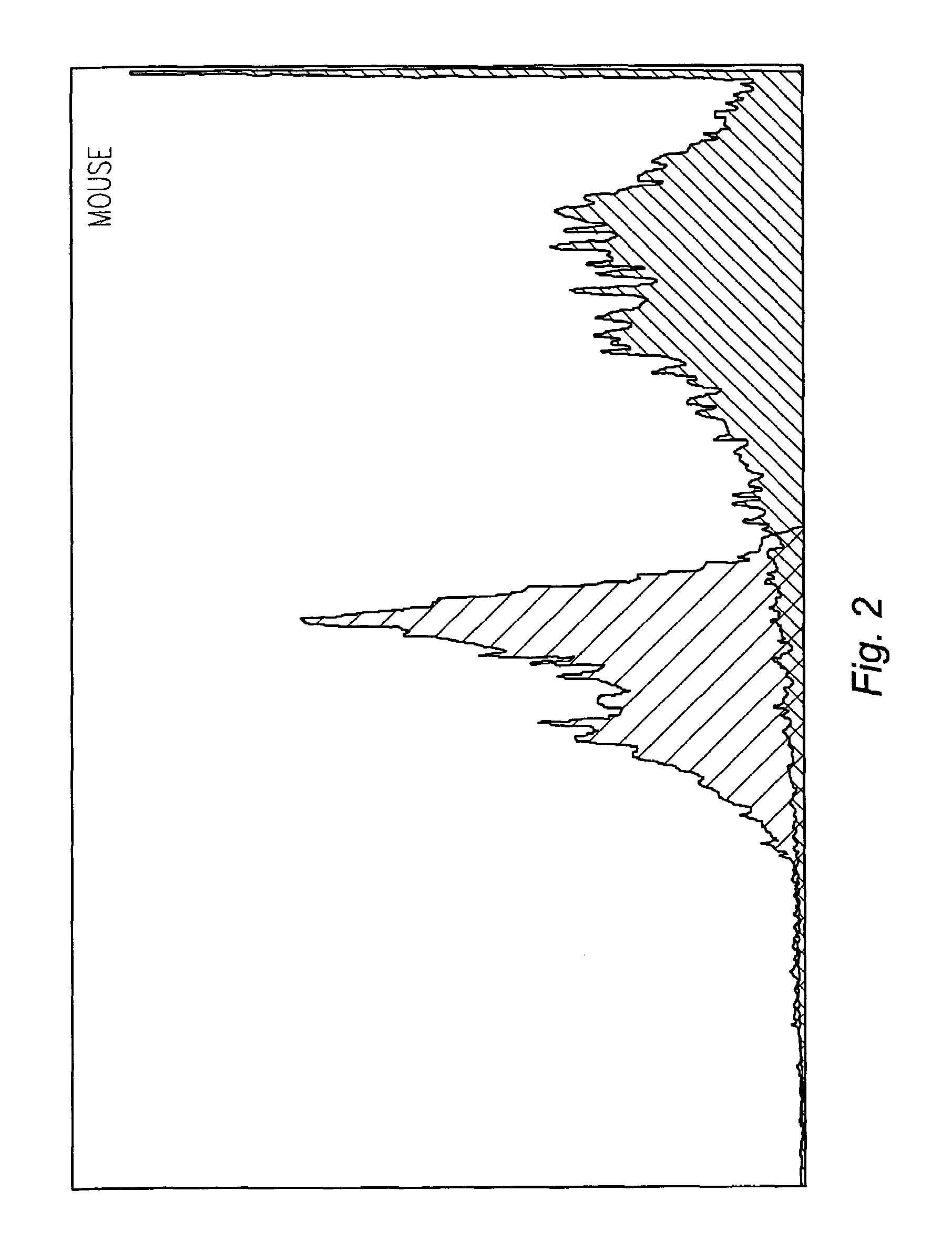Vector for genetically modifying non-human animals
a technology for vectors and non-human animals, applied in the field of vectors for genetically modified non-human animals, can solve the problems of poor viability of embryos after microinjection, high cost, and limited success of current techniques in higher or larger animals, and achieve the effect of fast growth rate and high production
- Summary
- Abstract
- Description
- Claims
- Application Information
AI Technical Summary
Benefits of technology
Problems solved by technology
Method used
Image
Examples
example ii
[0043]This example illustrates the ability of the monoclonal antibody mAbC to bind to DNA molecules through ionic interaction.
[0044]Different volumes of purified solutions of mAbC at a concentration of 0.5 mg / ml were added to DNA solutions containing 300 ng of Sal I cut pCMV-β plasmid (FIG. 8, Clontech Laboratories, Inc., Cat. # 6177-1). After incubating the mixtures at room temperature for forty minutes, the mixtures were loaded on a regular one percent agarose gel and run at 20 milli-amps for one hour. Afterwards, the DNA was stained with Ethidium Bromide and visualized under UV light.
[0045]In FIG. 9, lanes 1, 2, and 8 were controls with lane 1 being pure Sal I cut pCMV-β plasmid and lanes 2 and 8 being Sal I cut pCMV-β plasmid in Modified Tyrode's medium. Lanes 3, 4, 5, 6, and 7 corresponded to experimental reactions with the Sal I cut pCMV-β plasmid incubated with 0.2 μl, 1 μl, 2.5 μl, 6 μl, and 10 μl of mAbC at 0.5 mg / ml. In lanes 5, 6, and 7, increasing amounts of DNA were ret...
example iii
[0046]This example illustrates the binding or coupling of the DNA to the sperm via the linker or antibody.
[0047]DNA molecules, labeled with p32 using standard end labeling techniques with T4 DNA polymerase, were incubated with mouse, pig, chicken, sheep, goat, and cow sperm cells together with either mAbC, mAbD, or a control antibody specific to a Drosophila protein. The amount of DNA binding was measured by scintillation counting. The ratio of sperm cells to antibody were as follows:[0048]Mouse—400 thousand sperm cells to 600 ng of labeled DNA;[0049]Pig—600 thousand sperm cells to 800 ng labeled DNA;[0050]Chicken—300 thousand sperm cells to 500 ng of labeled DNA;[0051]Sheep—1 million sperm cells to 500 ng of labeled DNA;[0052]Goat—1 million sperm cells to 500 ng of labeled DNA; and[0053]Cow—1 million sperm cells to 500 ng of labeled DNA.
[0054]Table 1 shows that with the presence of mAbC and mAbD, sperm cells significantly bound more labeled DNA compared with reactions with no antib...
example iv
[0056]This example illustrates the procedures carried out to generate genetically modified mice.
[0057]Sperm cells were collected from dissected epididymis of nine to twenty weeks old FVB male mice. Cut into small pieces, these epididymis tissues were incubated in 300 μl of Modified Tyrode's medium at pH 7˜8 for one hour to allow the sperm cells to escape into the medium. Once the sperm cells were collected in 300 μl of medium, five micrograms of the linker antibody were added to one million sperm cells at 37° C. for one hour. The sperm-linker complex was washed three times with 300 μl of Modified Tyrode's medium using a standard microcentrifuge set at 3000 rpm for one and a half minutes. The sperm-linker complex was finally resuspended in 300 μl of medium, and one microgram of linearized pCMV-β plasmid or a plasmid encoding for Hepatitis B surface antigen (HBsAg) was added and incubated for one hour.
[0058]To collect ovulated eggs, nine to twelve weeks FVB female mice each received a...
PUM
| Property | Measurement | Unit |
|---|---|---|
| concentration | aaaaa | aaaaa |
| ionic interaction | aaaaa | aaaaa |
| covalent interaction | aaaaa | aaaaa |
Abstract
Description
Claims
Application Information
 Login to View More
Login to View More - R&D
- Intellectual Property
- Life Sciences
- Materials
- Tech Scout
- Unparalleled Data Quality
- Higher Quality Content
- 60% Fewer Hallucinations
Browse by: Latest US Patents, China's latest patents, Technical Efficacy Thesaurus, Application Domain, Technology Topic, Popular Technical Reports.
© 2025 PatSnap. All rights reserved.Legal|Privacy policy|Modern Slavery Act Transparency Statement|Sitemap|About US| Contact US: help@patsnap.com



